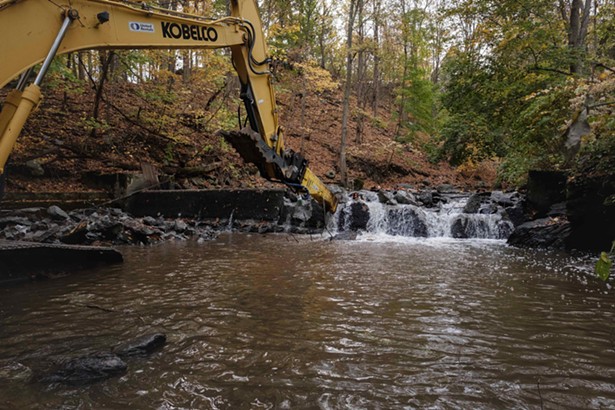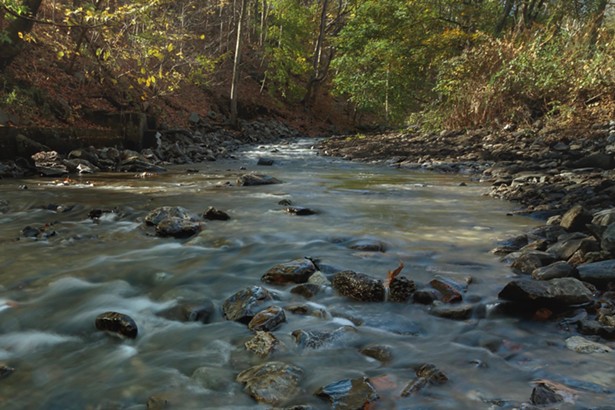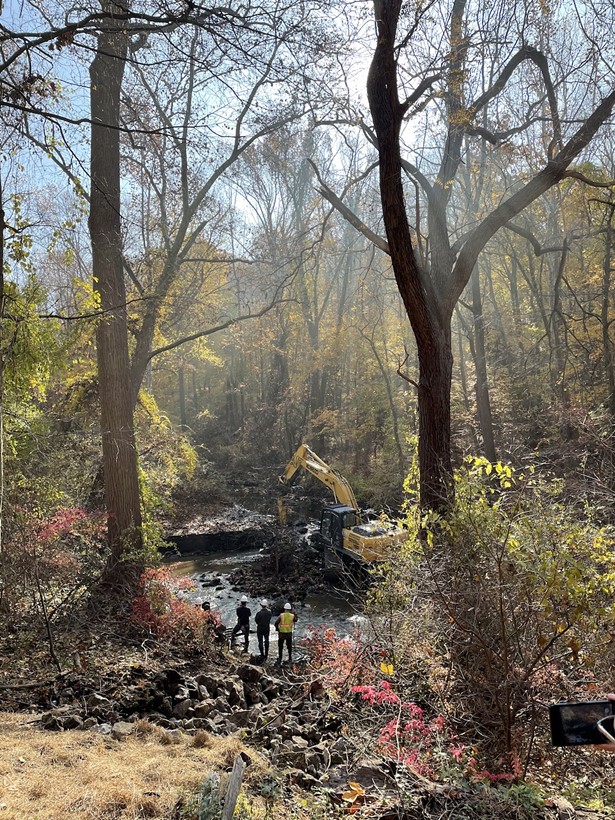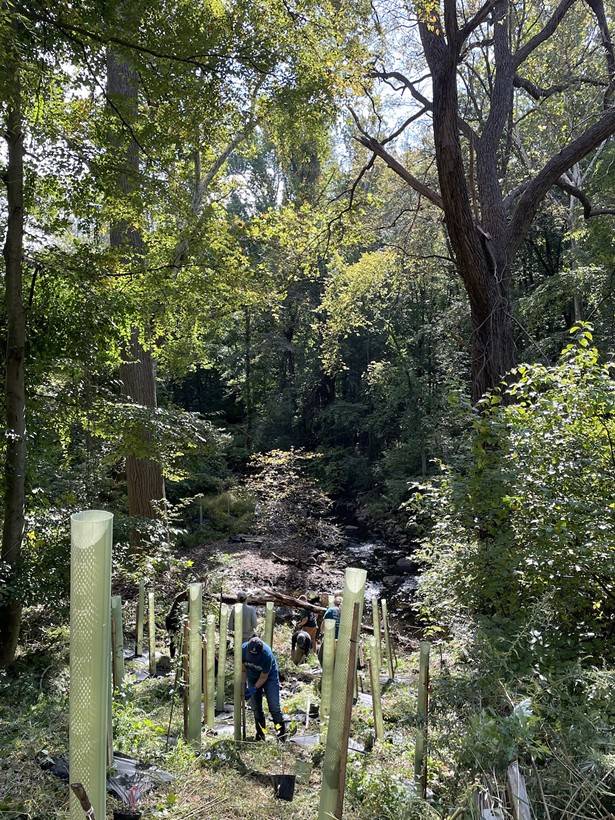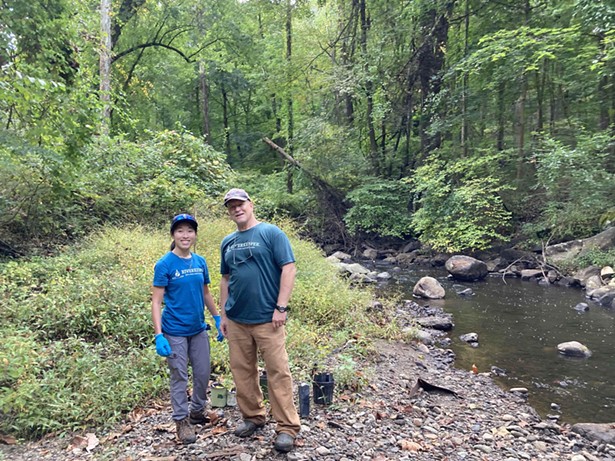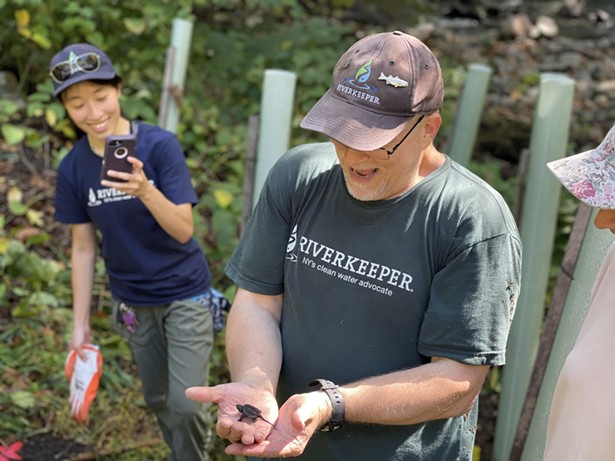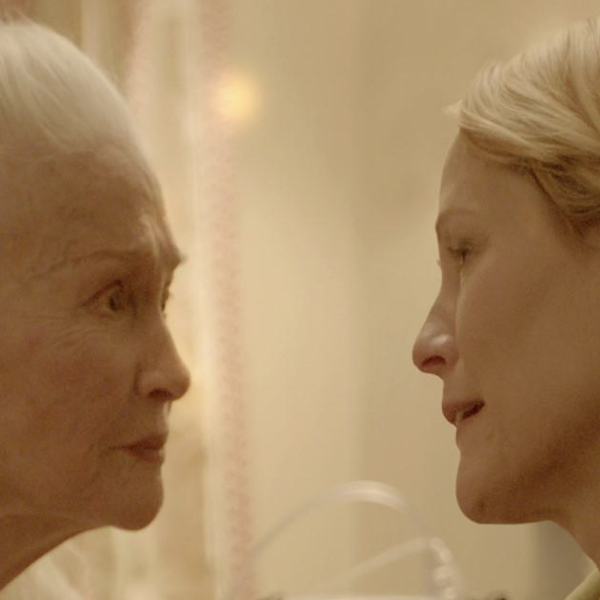Along the edge of Newburgh's Quassaick Creek, George Jackman, Riverkeeper's director of Habitat Restoration, watches closely as a Kobelco excavator meticulously drills into the Strooks Felt Dam. As he observes the excavator releasing a cascade of flowing water, Jackman's pensive expression transforms into one of satisfaction, fully aware that these efforts will enhance the habitats of nearby fish species.
This triumphant moment, along with other scenes of environmental activism, can soon be seen in One Dam at a Time, a 22-minute documentary by writer, filmmaker, and National Geographic “Ocean Hero” Jon Bowermaster. The documentary showcases the dam removal efforts of Riverkeeper, a nonprofit environmental organization dedicated to the protection of the Hudson and its tributaries. Two upcoming screenings of the film, one virtual and one in person, will take place next week.
There are at least 1,600 unused dams that fragment the rivers and streams of the Hudson Valley, threatening river ecosystems. These dams, typically around a century old, used to be the energy source for paper, woolen, and grist mills, as well as candle and iron factories, but have since fallen into a state of abandonment. Bowermaster emphasizes that despite their age, these dams lack historical significance and should be removed. “Sometimes when people see these dams on people’s property, they almost consider it a real estate bonus,” says Bowermaster. “People need to realize that these things are antiquated, not historic, and need to be taken out.”
Riverkeeper began their dam removal efforts in 2016, when they collaborated with the City of Troy and the state Department of Environmental Conservation to help remove a dam in the Wynants Kill. This dam removal succeeded in restoring more than a quarter mile of spawning habitat for river herring—an important species whose populations have significantly declined due to overharvest and the loss of spawning habitat. In 2020, Riverkeeper continued to restore streams by removing the Strooks Felt Dam on Quassaick Creek in Newburgh as well as another dam on Furnace Brook in Westchester County. Soon, Riverkeeper will work on removing the Maiden Lane Dam, also on Furnace Brook.
One Dam at a Time chronicles these efforts, which represent only the beginning of a much larger process. While many of these dams are small and hidden from view, they still pose a serious threat to river ecosystems. “To a fish, it doesn't matter if a dam is 6 feet tall or 100 feet tall,” says Bowermaster. “They can't pass through it either way.”
Unused dams pose a variety of risks to the wildlife restricted by them. For instance, any species stuck between two dams has limited gene flow and can become susceptible to inbreeding. Additionally, there can be contaminated sediments impounded behind these dams, which pose risks to both animal and human health.
Antiquated dams also pose a hazard to any people who may come into direct contact with them. When water flows over low head dams—smaller dams spanning the full width of a river—it forms a hydraulic recirculation of the water below the dam. As this recirculating current pulls an object in, super-oxygenated water significantly reduces the object's buoyancy, making it very difficult to stay afloat.
Jackman compares the experience of being battered against a dam to being trapped in a washing machine. “There are some dams that have killed many people,” says Jackman. “If you fall in a river where there’s a hydraulic recirculation below a dam, you’re in serious trouble.”
The obstacles behind removing a dam are bureaucratic; the physical removal of a dam takes less than a day, but the preparation can take months. On top of a multitude of permits, Riverkeeper needs to gain owner approval to remove a dam, gain stakeholder support from those who live nearby, and convince regulators that the project can move forward within the guidelines set by the state and federal government, the Army Corps of Engineers, and the Environmental Protection Agency.
All the red tape holds back an important need, leaving these dams standing as public dangers. “All dams are temporary, and if they’re not removed in a controlled fashion, they could be removed in a catastrophic act of nature,” says Jackman. “If we walk away, then nature will remove that dam, without a permit.”
Although gaining owner interest used to be a serious problem in the past, it’s less so now, and Riverkeeper has a whole list of dams with permission to remove. Now, the main barrier is funding. Ultimately, these dams are removed because it’s more expensive to repair and maintain a dam than to simply get rid of it. “All this is foisted upon the taxpayer, because certain corporate entities made profits and just abandoned these structures,” says Jackman. “It’s always us guys that gotta pay for this.”
Now, Riverkeeper needs awareness and the funding that follows. Through One Dam at a Time, Bowermaster hopes to inspire action to support the removal of unused dams. “I’m a big believer that media makes a difference, and especially that films make a difference,” says Bowermaster. “People react differently to film.”
Despite any struggles, those at Riverkeeper have faith in their project and focus on the visible effects of their work. The Wynants Kill dam removal allowed herring to return for the first time in 85 years, and when Jackman returned to Quassaick Creek to plant native trees with a team of volunteers, he was able to cradle a newly hatched snapping turtle—which he considers a symbol of restored biodiversity to the region.
One Dam at a Time’s world premiere virtual screening will take place on September 26 at 6pm. This screening will include a discussion and Q&A with Bowermaster, Jackman, Riverkeeper President Tracy Brown, and Riverkeeper Patrol Boat Captain and Vice President for Advocacy John Lipscomb. Register in advance here.
An in-person screening & brews event will take place at the Industrial Arts Brewing Company in Beacon on September 28 at 7pm. It will be followed by a brief discussion with Brown and Jackman, and attendees receive a complimentary beer with a $10 donation to Riverkeeper. Register here.







